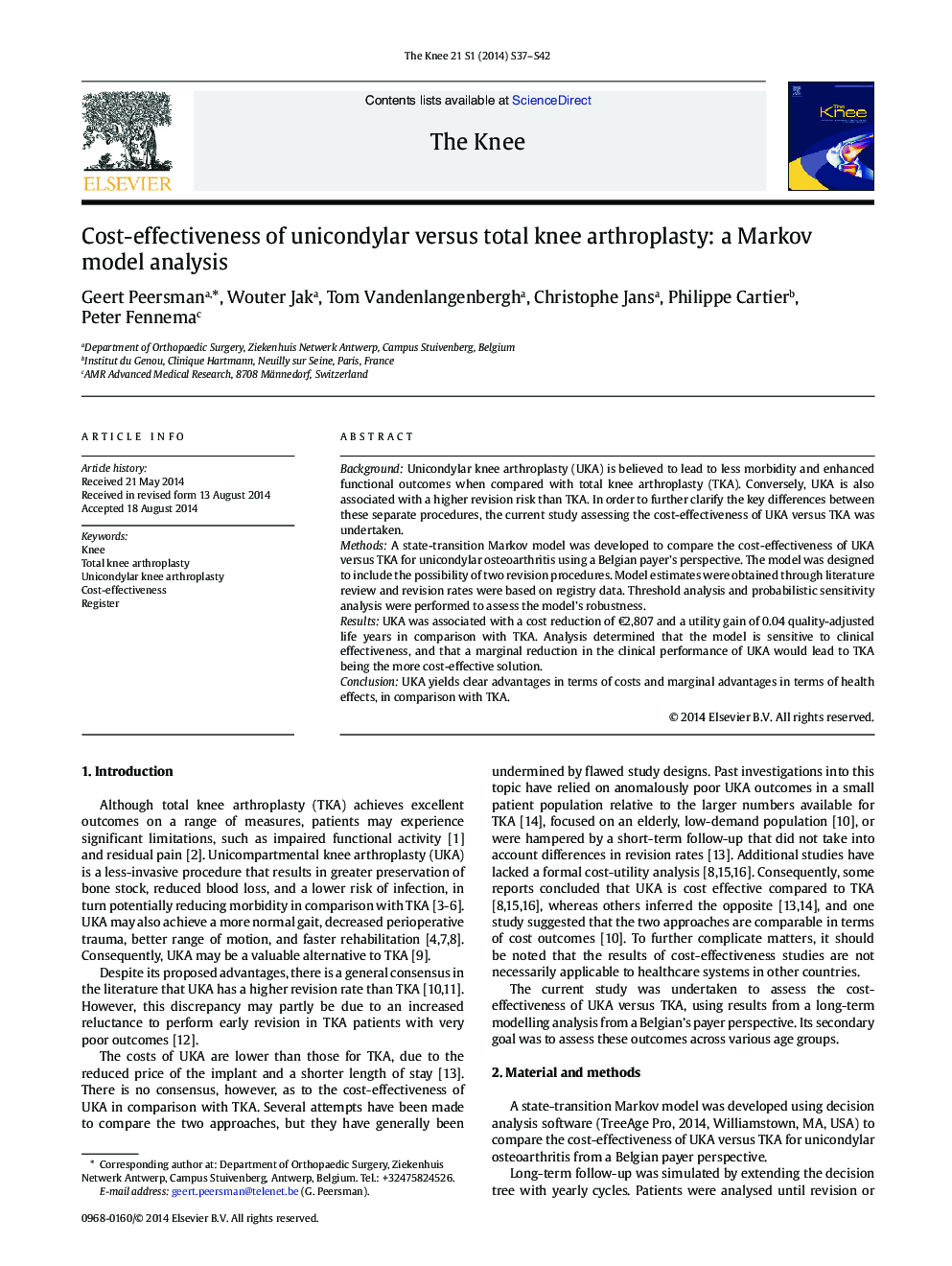| Article ID | Journal | Published Year | Pages | File Type |
|---|---|---|---|---|
| 4077415 | The Knee | 2014 | 6 Pages |
ABSTRACTBackgroundUnicondylar knee arthroplasty (UKA) is believed to lead to less morbidity and enhanced functional outcomes when compared with total knee arthroplasty (TKA). Conversely, UKA is also associated with a higher revision risk than TKA. In order to further clarify the key differences between these separate procedures, the current study assessing the cost-effectiveness of UKA versus TKA was undertaken.MethodsA state-transition Markov model was developed to compare the cost-effectiveness of UKA versus TKA for unicondylar osteoarthritis using a Belgian payer’s perspective. The model was designed to include the possibility of two revision procedures. Model estimates were obtained through literature review and revision rates were based on registry data. Threshold analysis and probabilistic sensitivity analysis were performed to assess the model’s robustness.ResultsUKA was associated with a cost reduction of €2,807 and a utility gain of 0.04 quality-adjusted life years in comparison with TKA. Analysis determined that the model is sensitive to clinical effectiveness, and that a marginal reduction in the clinical performance of UKA would lead to TKA being the more cost-effective solution.ConclusionUKA yields clear advantages in terms of costs and marginal advantages in terms of health effects, in comparison with TKA.
